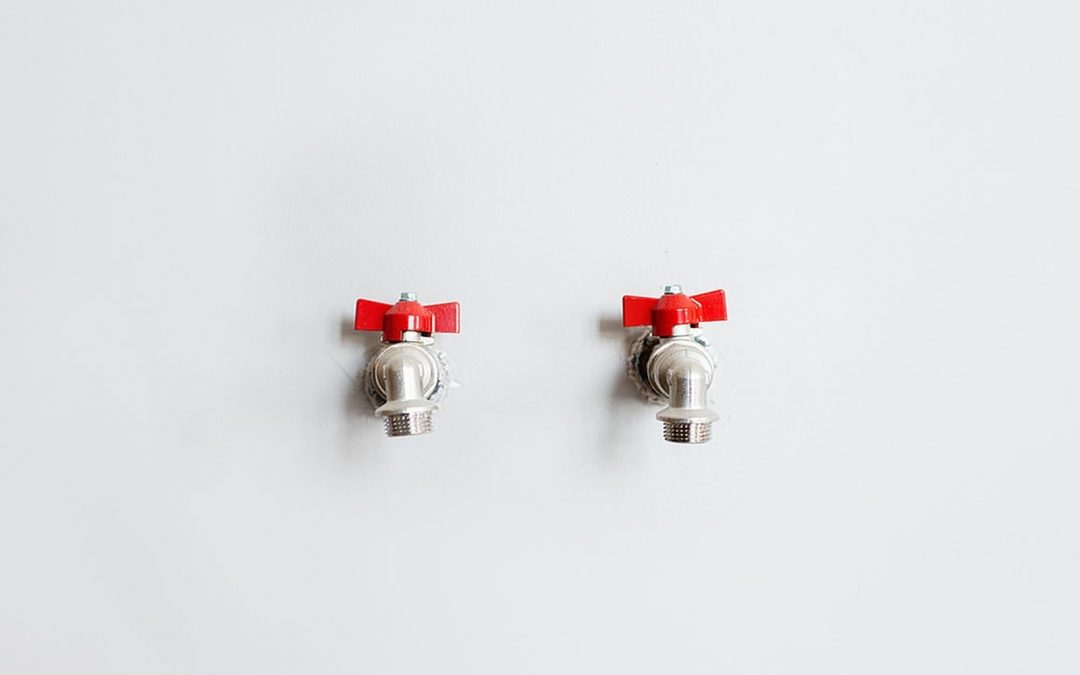Water purification systems may be broadly categorized as either “Point of Use” or “Point of Entry” systems.
Point of Entry (POE) systems are usually installed at the main water header entering your house. These systems are also term as “Whole house water filters” because the filtered water downstream the POE system goes to each and every tap outlet in the house. On the other hand, Point of Use (POU) systems filter water at a single specific tap where it is installed, usually under the sink or in the bathroom.
Point of Entry systems usually filter a broader range of contaminants such a suspended solids, free chlorine, organics, iron, sulfur, radioactive nuclides and other dissolved solids. The most common POE systems used are sediment filters, carbon filters, ion exchange filters, in most cases wherever treatment is required in order to safeguard the plumbing from silting, scaling and corrosion.
Point of Use systems aim to remove contaminants from water so as to meet more stringent water quality standards, as per the intended use.
POE Systems
Pros
-
-
-
-
-
-
-
-
-
-
- Convenience – These systems centrally remove contaminants at the inlet of your house. Keeping track and carrying out maintenance of your water treatment system is simpler because you have to perform it at only one location.
-
- Quality – Most POE function as multistage filtration systems and use a combination of different types of filters to arrest different contaminants. Hence, you can expect to receive water of consistent quality at each and every faucet in your house. The quality is suited for general household use.
-
- Capacity – Larger volumes of water can be treated through POE systems.
-
-
-
-
-
-
-
-
-
Cons
-
-
-
-
-
-
-
-
-
-
- Complexity – Operating and maintenance a series of filters might require the help of a professional. But in most cases, the frequency of filter replacement is lesser.
-
- Quality – The treated water is not suitable for drinking purposes.
-
-
-
-
-
-
-
-
-
POU systems
Pros
-
-
-
-
-
-
-
-
-
- High quality drinking water – Comparable or better than bottled water
-
- Bespoke treatment to obtain a desirable water quality at a specific water outlet
-
- Smaller and less complex units installed at single water outlets
-
- Ease of Operation – Replacing cartridge filters are fairly simple and do not require the help of a professional
-
- Works well as polishing unit if your inlet water source is fairly clean and can be used for general household use without further treatment. Since smaller volumes of water are treated in the POU systems, this would be a more economical option in this scenario.
-
-
-
-
-
-
-
-
Cons
-
-
-
-
-
-
-
-
-
- Quality of water is not consistent at each faucet
- Does not protect plumbing lines from scaling and corrosion
- Smaller capacity
- Maintenance and filter changing schedule (frequency may be different for different kinds of filters) have to be diligently tracked for each and every POU system.
-
-
-
-
-
-
-
-
Based on your water quality needs, a combination of POE and POU systems can work together as a foolproof system and deliver clean and potable water, wherever you require in your house.
Still making a decision? Here are a few tips that can help you decide:
1. Analyze your primary water source ideally from an accredited laboratory. Check the accredited laboratories in your state in the USA here: https://www.epa.gov/dwlabcert/contact-information-certification-programs-and-certified-laboratories-drinking-water#state-labs. Alternatively, you can do it at your own convenience through some test kits.
2. Compare the results to the guidelines stipulated by the US EPA given here:
https://www.epa.gov/ground-water-and-drinking-water/national-primary-drinking-water-regulations
3. Evaluate the volume of treated water required. Is the contamination level very high (presence of iron / manganese / hardness / heavy metals / sulfur) and requires treatment to safeguard the plumbing and aesthetics of your house?
If yes, consider a whole house filtration system.
Or, is your water supply relatively low in total dissolved solids, hardness, iron and your primary concern is clean drinking water?
If yes, consider getting an economical Point of Use system. E.g. In the kitchen for drinking water, a water softener for the bathrooms and laundry washing machine.
4. Check whether your shortlisted systems are NSF certified here. https://info.nsf.org/Certified/dwtu/ (NSF is an international independent organization which provides public health standards for products.)
5. Based on the operation and maintenance guidelines, evaluate how economical both systems would be, based on the above requirements. To take it a notch higher, check whether these are sustainable water filtration systems.
6. Evaluate the ease of procuring spares either online or locally and getting service in your area.

